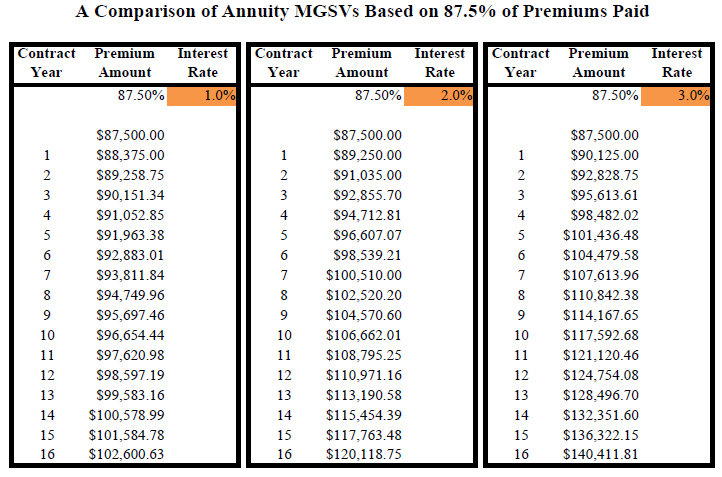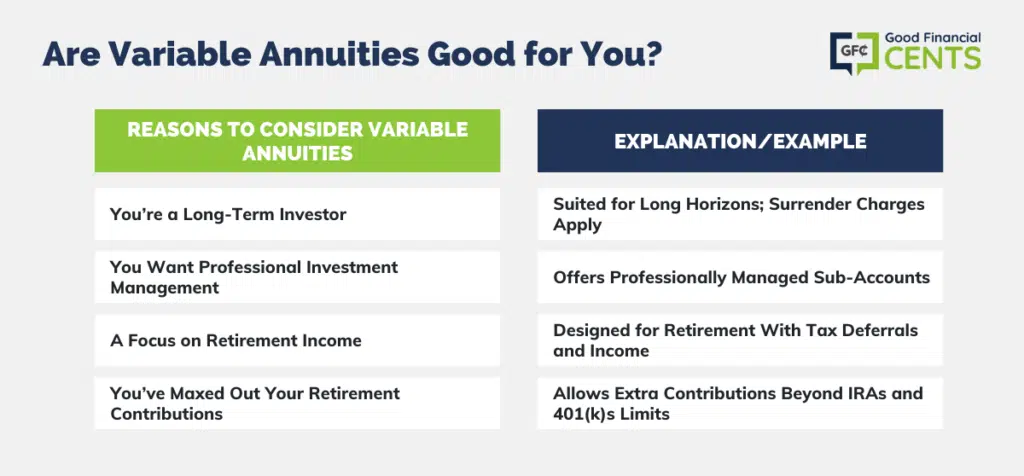All Categories
Featured
Table of Contents
The payment could be invested for development for an extended period of timea single costs delayed annuityor invested momentarily, after which payout beginsa solitary costs instant annuity. Single premium annuities are typically funded by rollovers or from the sale of a valued property. A flexible premium annuity is an annuity that is meant to be moneyed by a collection of settlements.
Proprietors of repaired annuities understand at the time of their purchase what the worth of the future cash flows will certainly be that are generated by the annuity. Clearly, the number of capital can not be understood ahead of time (as this relies on the agreement owner's life-span), however the ensured, repaired rates of interest a minimum of offers the owner some level of certainty of future earnings from the annuity.
While this distinction seems straightforward and uncomplicated, it can considerably impact the worth that a contract proprietor inevitably originates from his/her annuity, and it creates considerable unpredictability for the agreement owner - Annuities for conservative investors. It also commonly has a material influence on the degree of costs that a contract proprietor pays to the issuing insurer
Fixed annuities are typically utilized by older financiers who have actually limited possessions yet that wish to offset the danger of outlasting their assets. Fixed annuities can offer as an efficient device for this function, though not without certain drawbacks. In the situation of instant annuities, as soon as an agreement has actually been purchased, the agreement owner relinquishes any type of and all control over the annuity assets.
Analyzing Strategic Retirement Planning A Closer Look at Fixed Index Annuity Vs Variable Annuities What Is the Best Retirement Option? Pros and Cons of Variable Vs Fixed Annuities Why Choosing the Right Financial Strategy Is a Smart Choice How to Compare Different Investment Plans: How It Works Key Differences Between Fixed Vs Variable Annuity Pros Cons Understanding the Key Features of What Is A Variable Annuity Vs A Fixed Annuity Who Should Consider Variable Vs Fixed Annuity? Tips for Choosing the Best Investment Strategy FAQs About What Is A Variable Annuity Vs A Fixed Annuity Common Mistakes to Avoid When Planning Your Retirement Financial Planning Simplified: Understanding Variable Vs Fixed Annuity A Beginner’s Guide to Smart Investment Decisions A Closer Look at How to Build a Retirement Plan
An agreement with a common 10-year abandonment period would bill a 10% abandonment fee if the contract was surrendered in the first year, a 9% surrender cost in the 2nd year, and so on till the surrender cost reaches 0% in the agreement's 11th year. Some postponed annuity contracts have language that permits tiny withdrawals to be made at various periods throughout the surrender period without charge, though these allowances generally come at a price in the kind of reduced guaranteed rate of interest.
Equally as with a taken care of annuity, the owner of a variable annuity pays an insurer a round figure or collection of repayments for the guarantee of a series of future repayments in return. As mentioned over, while a taken care of annuity expands at an assured, continuous price, a variable annuity grows at a variable rate that depends upon the performance of the underlying financial investments, called sub-accounts.
During the accumulation phase, assets invested in variable annuity sub-accounts grow on a tax-deferred basis and are exhausted just when the contract owner takes out those earnings from the account. After the build-up phase comes the income phase. In time, variable annuity assets must in theory enhance in worth up until the contract owner chooses he or she would love to begin taking out cash from the account.
The most substantial issue that variable annuities normally existing is high cost. Variable annuities have numerous layers of costs and costs that can, in accumulation, create a drag of up to 3-4% of the agreement's value each year.
M&E cost costs are computed as a portion of the contract worth Annuity issuers pass on recordkeeping and various other management costs to the agreement owner. This can be in the type of a flat yearly cost or a portion of the contract value. Management costs may be included as part of the M&E danger charge or may be evaluated individually.
These charges can range from 0.1% for easy funds to 1.5% or more for actively managed funds. Annuity agreements can be personalized in a number of ways to serve the specific demands of the agreement proprietor. Some usual variable annuity bikers consist of ensured minimal buildup benefit (GMAB), assured minimum withdrawal benefit (GMWB), and ensured minimal earnings advantage (GMIB).
Decoding How Investment Plans Work A Closer Look at Retirement Income Fixed Vs Variable Annuity What Is the Best Retirement Option? Pros and Cons of What Is Variable Annuity Vs Fixed Annuity Why Variable Annuity Vs Fixed Annuity Can Impact Your Future How to Compare Different Investment Plans: Simplified Key Differences Between Different Financial Strategies Understanding the Key Features of Fixed Vs Variable Annuity Pros And Cons Who Should Consider Strategic Financial Planning? Tips for Choosing Variable Vs Fixed Annuity FAQs About Fixed Vs Variable Annuity Common Mistakes to Avoid When Choosing Variable Annuity Vs Fixed Annuity Financial Planning Simplified: Understanding Annuities Variable Vs Fixed A Beginner’s Guide to Smart Investment Decisions A Closer Look at How to Build a Retirement Plan
Variable annuity payments provide no such tax obligation deduction. Variable annuities often tend to be highly inefficient cars for passing wide range to the following generation due to the fact that they do not delight in a cost-basis change when the original agreement owner dies. When the owner of a taxed investment account dies, the price bases of the investments kept in the account are adapted to reflect the marketplace prices of those investments at the time of the owner's death.
Such is not the situation with variable annuities. Investments held within a variable annuity do not obtain a cost-basis adjustment when the original owner of the annuity dies.

One significant problem connected to variable annuities is the potential for problems of passion that may exist on the part of annuity salesmen. Unlike an economic consultant, who has a fiduciary duty to make investment choices that benefit the customer, an insurance broker has no such fiduciary responsibility. Annuity sales are very lucrative for the insurance coverage professionals who sell them due to high upfront sales payments.
Lots of variable annuity agreements include language which positions a cap on the portion of gain that can be experienced by particular sub-accounts. These caps prevent the annuity owner from totally joining a portion of gains that might otherwise be enjoyed in years in which markets produce considerable returns. From an outsider's point of view, it would seem that capitalists are trading a cap on financial investment returns for the previously mentioned assured flooring on financial investment returns.
Breaking Down Fixed Interest Annuity Vs Variable Investment Annuity A Comprehensive Guide to Fixed Interest Annuity Vs Variable Investment Annuity Breaking Down the Basics of Investment Plans Pros and Cons of Fixed Index Annuity Vs Variable Annuities Why Choosing the Right Financial Strategy Matters for Retirement Planning How to Compare Different Investment Plans: How It Works Key Differences Between Annuities Variable Vs Fixed Understanding the Rewards of Long-Term Investments Who Should Consider Variable Annuities Vs Fixed Annuities? Tips for Choosing the Best Investment Strategy FAQs About Fixed Index Annuity Vs Variable Annuity Common Mistakes to Avoid When Planning Your Retirement Financial Planning Simplified: Understanding Variable Vs Fixed Annuities A Beginner’s Guide to Smart Investment Decisions A Closer Look at How to Build a Retirement Plan
As noted over, give up fees can drastically limit an annuity owner's capability to relocate assets out of an annuity in the early years of the contract. Even more, while the majority of variable annuities enable contract proprietors to withdraw a defined quantity throughout the build-up stage, withdrawals yet quantity usually result in a company-imposed cost.
Withdrawals made from a set rates of interest investment alternative can also experience a "market worth change" or MVA. An MVA changes the value of the withdrawal to mirror any type of modifications in rates of interest from the time that the cash was purchased the fixed-rate alternative to the time that it was taken out.

Frequently, also the salespeople that market them do not completely understand exactly how they work, therefore salesmen sometimes victimize a buyer's emotions to offer variable annuities as opposed to the values and viability of the items themselves. We believe that investors ought to totally understand what they own and just how much they are paying to own it.
Nonetheless, the exact same can not be claimed for variable annuity properties held in fixed-rate investments. These assets legally come from the insurance company and would certainly for that reason be at danger if the company were to stop working. Any guarantees that the insurance policy business has actually concurred to offer, such as an ensured minimal income advantage, would certainly be in inquiry in the event of an organization failure.
Decoding Choosing Between Fixed Annuity And Variable Annuity A Comprehensive Guide to Annuities Fixed Vs Variable Defining the Right Financial Strategy Advantages and Disadvantages of Different Retirement Plans Why Choosing the Right Financial Strategy Is Worth Considering How to Compare Different Investment Plans: How It Works Key Differences Between Retirement Income Fixed Vs Variable Annuity Understanding the Risks of Long-Term Investments Who Should Consider Annuity Fixed Vs Variable? Tips for Choosing Variable Annuities Vs Fixed Annuities FAQs About Planning Your Financial Future Common Mistakes to Avoid When Choosing a Financial Strategy Financial Planning Simplified: Understanding Your Options A Beginner’s Guide to Smart Investment Decisions A Closer Look at How to Build a Retirement Plan
Therefore, possible buyers of variable annuities must comprehend and think about the financial condition of the releasing insurer before participating in an annuity contract. While the benefits and downsides of various types of annuities can be debated, the actual issue surrounding annuities is that of suitability. Put simply, the concern is: who should have a variable annuity? This question can be hard to address, offered the myriad variations available in the variable annuity universe, however there are some basic standards that can aid capitalists determine whether annuities should contribute in their monetary plans.
Nevertheless, as the stating goes: "Customer beware!" This write-up is prepared by Pekin Hardy Strauss, Inc. ("Pekin Hardy," dba Pekin Hardy Strauss Wealth Administration) for educational objectives just and is not intended as an offer or solicitation for organization. The details and data in this write-up does not constitute lawful, tax, accountancy, investment, or other expert recommendations.
Table of Contents
Latest Posts
Decoding How Investment Plans Work A Closer Look at How Retirement Planning Works Breaking Down the Basics of Investment Plans Features of Smart Investment Choices Why Choosing the Right Financial Str
Decoding Fixed Index Annuity Vs Variable Annuity Key Insights on Your Financial Future What Is the Best Retirement Option? Benefits of Deferred Annuity Vs Variable Annuity Why Variable Annuity Vs Fixe
Exploring Immediate Fixed Annuity Vs Variable Annuity Everything You Need to Know About Financial Strategies Defining the Right Financial Strategy Pros and Cons of Various Financial Options Why Fixed
More
Latest Posts